Pros and cons of Critical Role’s Daggerheart TTRPG system, currently in playtesting

Recently, the Blizzard Watch crew played the public beta playtest of Daggerheart (you can listen to our session zero now)– the upcoming tabletop role-playing game from Darringon Press, the fine folks who bring you Critical Role. If you’re at all familiar with that show, a lot of the elements of Daggerheart are going to seem almost like a wishlist for Matt Mercer and his players: narrative-forward gameplay, fast freeform combat, and a lot of things you’ll know and love (like Exandria’s fairly distinctive firbolgs being a character creation option). But none of that really answers the most pressing question: what’s it like to actually play Daggerheart?
As always, please note that the reflections that follow are based on playing the 1.2 version of the playtest; things have changed from version to version before this, and things can and will change between now and the final version (and already have changed in version 1.3!), but these were my thoughts after some ruminating on our game. If you’re interested in testing at your own table, you can get the rules from daggerheart.com, or on Daggerheart Nexus on Demiplane.
Here are the pros and cons of the Daggerheart system, based on our chance to playtest the game.
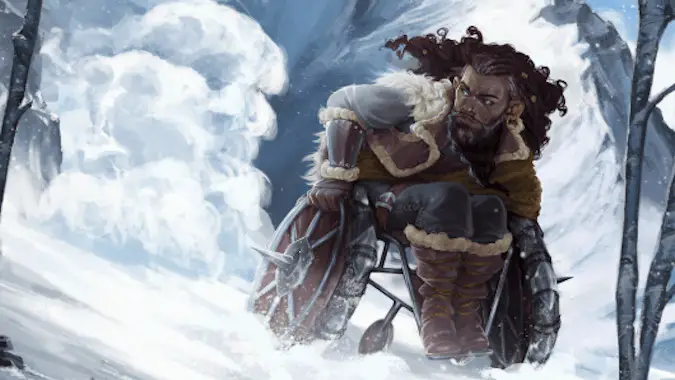
Pro: The Duality Dice put success and failure on a spectrum
One of the main criticisms of d20-based systems like Dungeons and Dragons is that there is no real room for interpretation in dice rolls as written — either you pass or you fail, yes or no. You make the skill check, or you don’t; you hit, or you miss, and nothing else happens.
Daggerheart‘s solution to this is the “Duality Dice.” The primary dice roll in this game is 2d12, in two different colors: one d12 representing Hope and one d12 representing Fear. You add them together with any relevant modifiers, to see if you pass or fail a check — but it’s important if the higher d12 was the Hope or Fear die. Getting two of the same number, no matter what, is a critical success (and this can be weird: at one point a player rolled double 1s and was audibly distraught until reminded that that was a critical success).
This means you actually end up with a spectrum of success and failure that looks like this:
- Critical Success — on any doubles, you do what you wanted to do and then some. You get a Hope, a meta-currency that lets players use some abilities), clear Stress, and there are likely narrative aspects to reflect that you did as well as you possibly could.
- Success, with Hope — you do what you wanted, and then a little more. You get a Hope, and you succeed at the thing you wanted to do.
- Success, with Fear — a partial success. You accomplish the thing you wanted to do, but there’s a complication and the GM takes a Fear token — their meta-currency. Maybe you succeeded at picking a lock on a door, but on opening the door you find the room is occupied when you weren’t expecting anyone to be there.
- Failure, with Hope — you don’t do the thing you want, but it’s not as bad as it could have been, and you still get a Hope. Using the lockpicking example, you didn’t pick the lock, but you did duck out of the way just in time to dodge a patrolling guard.
- Failure, with Fear — the worst possible result. The GM gets a Fear, you don’t do the thing you wanted, and there’s likely some narrative entanglement. Not only did you not pick that lock, but now there’s armed guards running your way yelling “halt!”
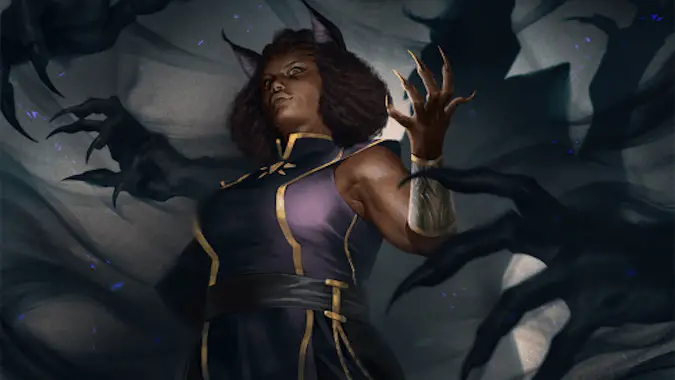
Pro: Character creation is fast, fun, and builds a party — not just individual characters
Even in the time before our session zero, our players were rapidly generating Daggerheart character concepts and having a blast doing it. Picking a heritage (a combination of ancestry, like Human or Elf, and heritage, like Underborne or Wildborne) and class will feel familiar to D&D players, but other aspects feel very different; stats are just modifiers, not raw numbers, and are picked from a set array, while class tends to have more choices in what abilities you have at first level.
Of special interest are experiences — rather than just having a stock list of skills that you’re either proficient in or not, you have two starting experiences you can freely define that represent your character’s, well, life experience, applying them when they’re applicable to the situation at hand. For example, Matt‘s Wanderborne Clank Seraph, The Orphan, who had a strong “party protector” vibe, has the experiences “Last Vestige of a Forgotten God” (fairly straightforward!) and “I Will Not Break,” while Anne‘s flighty Wanderborne Faerie Bard, Thistledown Caterwaul, is “Weirdly Good With Animals” and swears “I Will Talk You Into Anything.” Letting players have this kind of self-expression is a really nice narrative touch over a rote list of skills, of which Perception is the most wildly important one (D&D players do not @ me — you know I’m right).
The most intriguing part for me, though, are connections, which are generated together as a party. Part of Daggerheart‘s conceit is that players are already experienced adventurers, and in this case, it also assumes they know at least a couple other people in the party. In a feature that may be familiar to players of other indie tabletop games like Dungeon World, connections are questions that the players ask each other of their characters, defining how they already know each other and are tied together. This creates a set of relationships that already exist, rather than just making four to five unique characters and smashing them together and hoping they bond. The one concern we had with the prewritten ones right now is that they tend to lead your characters in a very specific direction — for example, the Bard’s “Why do you grab my hand at night?” question may not be appropriate for all Bards at all! We’re hoping that in the final product they either include more connection choices per character, or perhaps a more general list of connections any class could choose from.
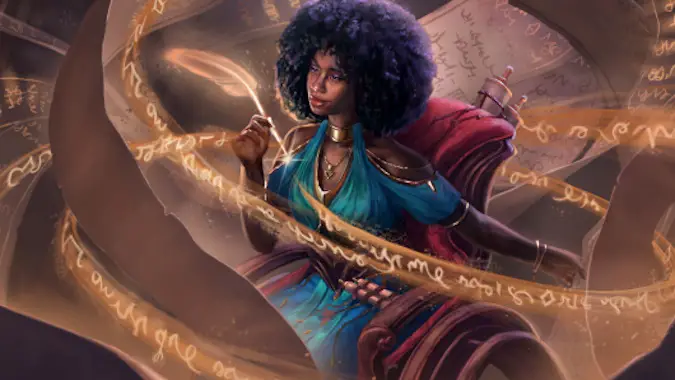
Pro (or maybe con): Worldbuilding isn’t entirely on the GM’s shoulders
You’re going to hear me bang on about narrative a lot in this review, and one of Daggerheart‘s GM principles (which are themselves lifted almost directly from narrative-centric games like Blades in the Dark and the aforementioned Dungeon World) is “ask questions and incorporate the answers.”
The GM is actively encouraged to freely ask the players to define things in scenes that would normally by the GM’s purview, or to turn questions around on them and let them shape the world where they will. As an example, at one point in our playtest the group ran across a deceased merchant who had fallen afoul of some bandits in the woods; Liz asked me if her Underborne Ribbet Rogue, who also has a merchant background, knew who this guy was. It would’ve been just as easy for me to say yes or no, but following the principles of the game, I turned it back around: “I don’t know, does Arvid know any merchants who regularly traffic through the Sablewood?”
This, however, highlights a downside of this aspect of gameplay (and isn’t unique to this game): for players who aren’t expecting it, or aren’t used to games where it happens, or who just don’t improvise well on their feet, this can really feel like they’re being put on the spot. That aspect of the game is going to be one that I feel varies strongly from table to table, and may have been easier if we had done the worldbuilding segment of the game’s prescribed session zero — yes, for GMs who are new to it, Daggerheart tells you exactly how to run a productive session zero — but as this was just a one-shot (so far), we did not.
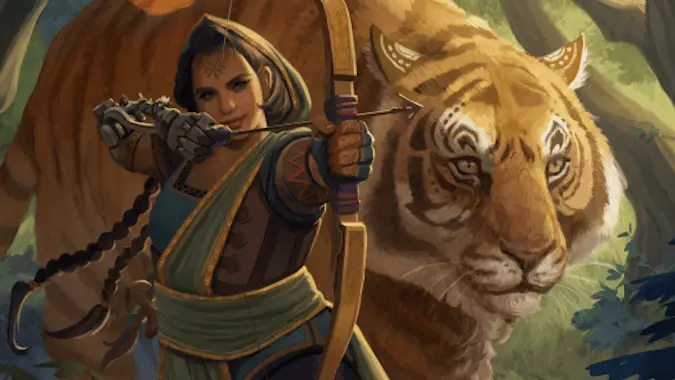
Con: Initiative-free combat can be tricky to run (and play)
I knew going into the playtest from reading commentary on Reddit that Daggerheart‘s approach to combat was already divisive, even among narrative game fans. Rather than having a set initiative order in which everyone acts like D&D, Daggerheart uses the concept of an Action Tracker — allowing moment-to-moment back-and-forth between the players and the GM — but does not actually prescribe the order in which actions happen. Instead, players act in the order that makes the most sense or is the most narratively interesting (placing one player token on the Action Tracker per action), and the GM takes their turns by using the player tokens and their own resource, called Fear, to perform actions for the adversaries.
This did feel extremely weird at first, I won’t lie. It also could set up a scenario where players who are more assertive at taking actions with their characters can easily overrun players who are less active about speaking up — luckily not a problem with this group — and also could negatively incentivize players to have their characters “sit out” a combat in which they don’t feel effective (such as physical characters not wanting to feel ineffective against foes who resist physical damage). Some of the former problem can be alleviated by the GM placing the spotlight on players who haven’t spoken up in a little bit to see what their characters are up to, but nothing in the current system really alleviates the fact that it’s possible for players to zone out on purpose in some fights and have it be a positive idea.
Luckily, the very next version of the playtest, version 1.3, fixed this problem with a nicer compromise between narrative and crunch. Optional rules for turn-based initiative have players take up to 3 actions (marking them with tokens), ensuring that everyone takes some actions and the spotlight gets passed around completely and everyone participates; once everyone has taken 3 actions, their action tokens refill and they continue as usual. Nothing has really changed for the GM, other than some clarifications about when they activate and what they can do, but the players’ actions in Action Tracker moments have been more clearly defined in a way that sounds, in concept at least, really good.
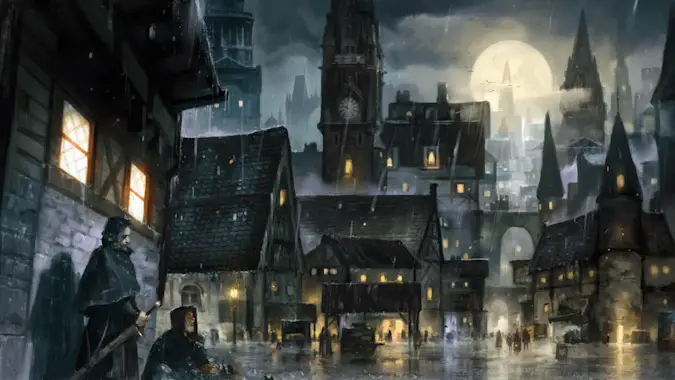
In conclusion: I’m ready to play Daggerheart again
Despite the issues we all felt with combat, I think the group felt fairly positive about Daggerheart. The game itself generates fleshed-out, fun characters that I honestly wasn’t ready to stop adventuring with. It feels like a positive compromise between tactical combat-forward TTRPGs like D&D and narrative-focused story-first games like Blades in the Dark; I can see why this would appeal to players who, say, have a wildly popular actual play podcast and show. While some work definitely needs to be done sanding down some rough edges — and what playtest doesn’t have those? — I felt very happy coming out of the playtest, and I look forward to revisiting Daggerheart in future playtests as it moves closer to release.
Please consider supporting our Patreon!
Join the Discussion
Blizzard Watch is a safe space for all readers. By leaving comments on this site you agree to follow our commenting and community guidelines.
 @awaymessageclub
@awaymessageclub




